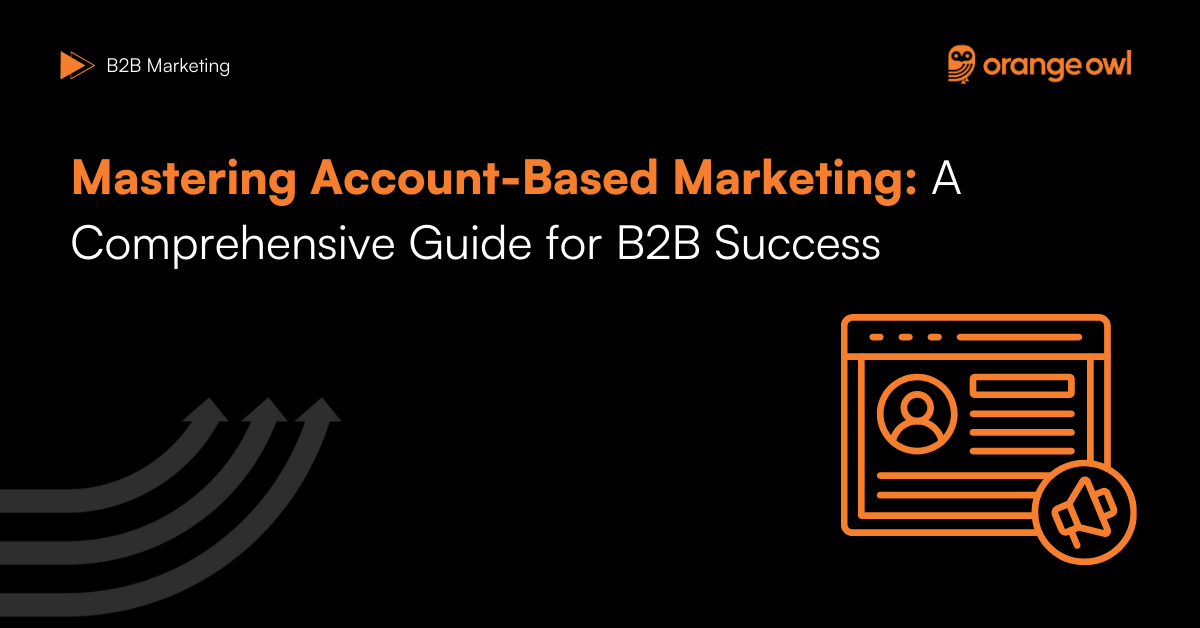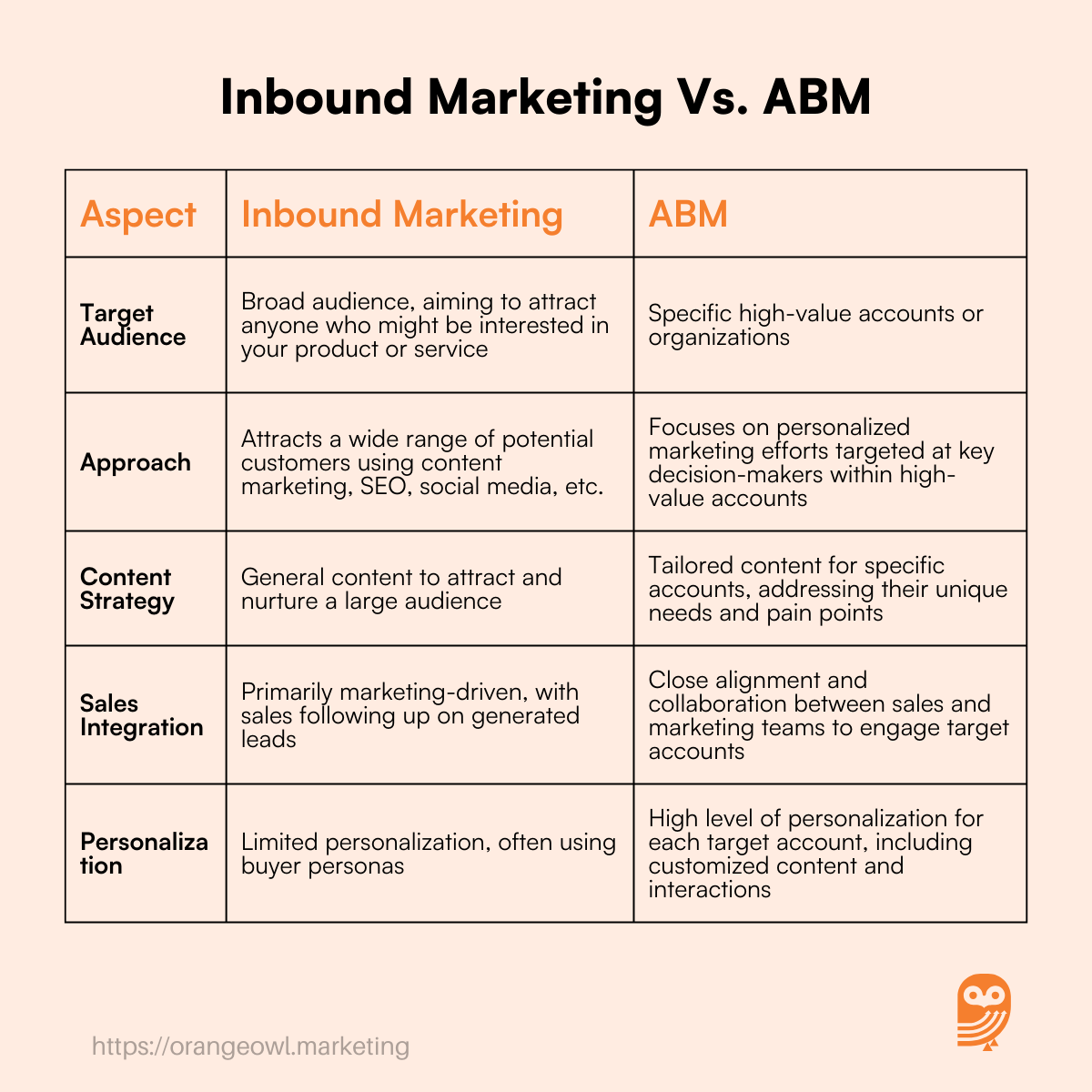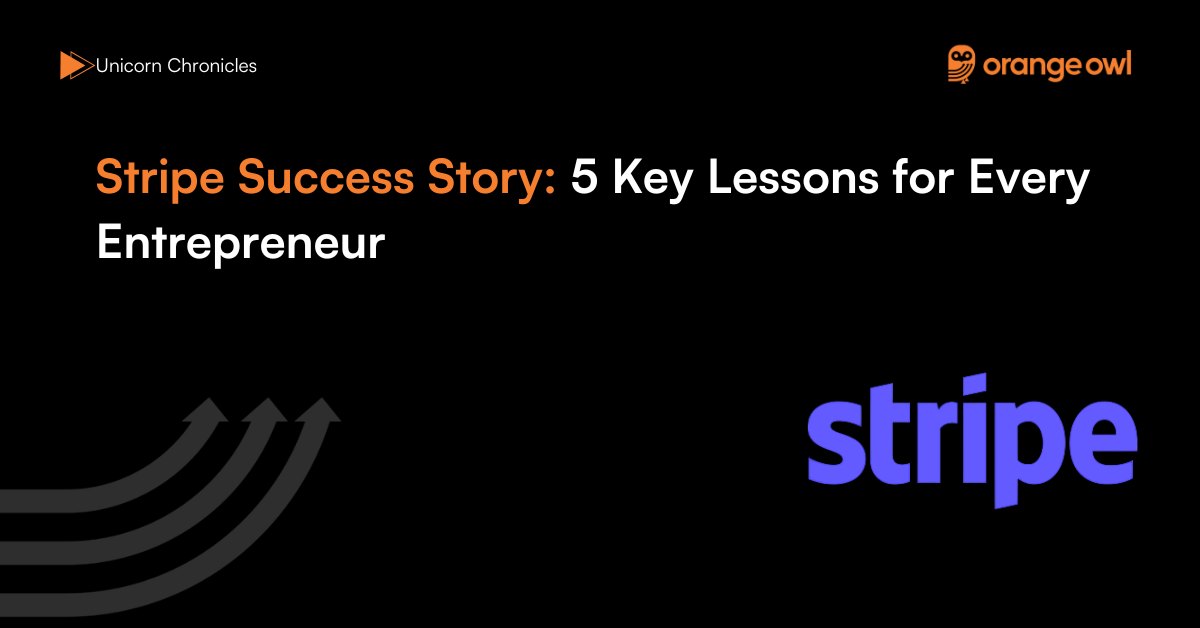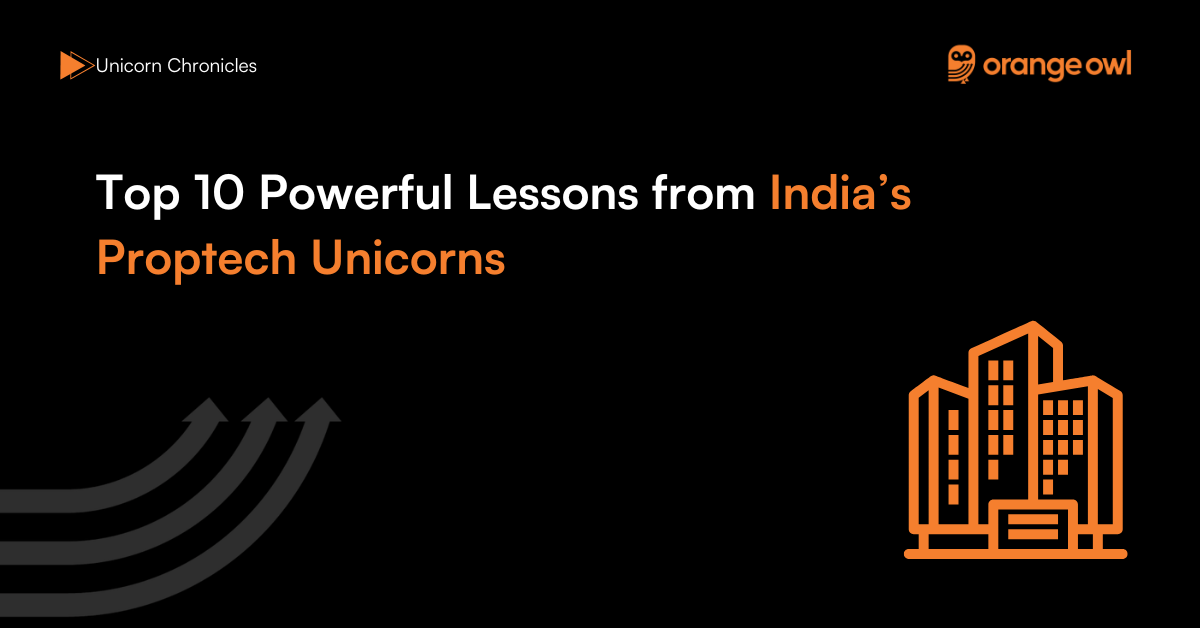The Ultimate Guide to Account-Based Marketing for B2B Success in 2025
Vivek Goel
January 19, 2025

Table of Contents
Introduction
In the ever-evolving landscape of B2B marketing, one strategy has emerged as a game-changer: Account-Based Marketing (ABM). Unlike traditional marketing approaches that cast a wide net, ABM focuses on targeted, personalized marketing efforts directed at high-value accounts. This strategy not only increases the efficiency of marketing efforts but also aligns closely with sales and Go-to-Market (GTM) strategies to drive better business outcomes. By integrating ABM with a robust GTM approach, companies can ensure a cohesive and comprehensive strategy that maximizes their market impact and enhances their ability to achieve strategic goals.
What is Account-Based Marketing?
Account-Based Marketing (ABM) is a strategic approach that focuses on identifying and targeting key accounts, treating them as individual markets. This personalized strategy involves tailoring marketing campaigns and messages to the specific needs and pain points of each account, fostering deeper engagement and higher conversion rates.
How is Account-Based Marketing (ABM) different from traditional marketing?
Traditional marketing often focuses on broad-based campaigns aimed at reaching a wide audience with the hope of attracting a subset of interested prospects. It uses methods such as mass email blasts, general social media marketing, and broad-based advertising. In contrast, ABM targets specific high-value accounts and tailors marketing efforts to meet the unique needs of each account. This involves personalized messaging, customized content, and close collaboration with sales teams to engage specific decision-makers within target accounts.
How is Account-Based Marketing (ABM) different from Inbound Marketing?
ABM and inbound marketing differ in several key ways:
- Targeting Approach: Inbound marketing attracts a broad audience through content and SEO, while ABM targets specific high-value accounts with personalized campaigns.
- Content Strategy: Inbound marketing focuses on creating general content to attract and nurture leads, whereas ABM creates tailored content for specific accounts.
- Sales Integration: ABM requires closer alignment and collaboration with sales teams to engage target accounts, while inbound marketing primarily focuses on generating and nurturing leads for sales to follow up.
- Resource Allocation: ABM allocates resources to high-value accounts, while inbound marketing spreads resources across a wider audience.

Why ABM Matters in B2B Marketing? What are the Benefits?
ABM is particularly effective in B2B marketing for several reasons:
- Higher ROI: According to a survey by ITSMA, 87% of marketers report that ABM delivers higher ROI than other marketing activities.
- Better Alignment with Sales: ABM promotes closer collaboration between marketing and sales teams, ensuring a unified approach to targeting and engaging key accounts.
- Personalized Marketing: By focusing on the specific needs of high-value accounts, ABM enables more personalized and relevant marketing efforts.
- Efficient Resource Allocation: ABM allows marketers to concentrate their resources on accounts with the highest potential value, maximizing the impact of their efforts.
The Account-Based Marketing Process: A Step-by-Step Guide
Implementing an effective ABM strategy involves several key steps, from account selection to post-campaign analysis. Here’s a detailed breakdown of each phase.
1. Account Selection
The first step in ABM is identifying and selecting the accounts that are most likely to yield significant business value. This involves a combination of qualitative and quantitative methods.
Criteria for Account Selection:
- Revenue Potential: Focus on accounts that have a high potential for revenue generation.
- Strategic Fit: Ensure that the selected accounts align with your company’s strategic goals and objectives.
- Existing Relationships: Leverage existing relationships to identify accounts that are more likely to engage.
- Intent Data: Use intent data to identify accounts that are actively researching solutions like yours.
Tools for Account Selection:
- LinkedIn Sales Navigator: Helps identify and connect with key decision-makers within target accounts.
- ZoomInfo: Provides detailed company and contact information to assist in account selection.
- 6sense: Uses predictive analytics and intent data to identify accounts showing buying signals.
2. Account Research and Insights
Once you’ve selected your target accounts, the next step is to gather detailed insights about each account. This involves understanding their business challenges, goals, decision-making processes, and key stakeholders.
Research Methods:
- Company Websites: Explore the company’s website for information about their products, services, and recent news.
- Social Media: Monitor social media channels to gain insights into the company’s activities and employee perspectives.
- Industry Reports: Review industry reports and news articles to understand the broader market context in which the account operates.
Tools for Account Research:
- Owler: Provides competitive intelligence and company insights.
- Crimson Hexagon: Analyzes social media and online content to gather insights about target accounts.
- Datanyze: Offers technographic data to understand the technology stack of target accounts.
3. Personalization and Messaging
With a deep understanding of your target accounts, you can now create highly personalized marketing messages and campaigns. The goal is to address the specific needs and pain points of each account, making your marketing efforts more relevant and engaging.
Personalization Strategies:
- Tailored Content: Create content that speaks directly to the challenges and goals of each account. This could include personalized emails, case studies, whitepapers, and blog posts.
- Custom Landing Pages: Develop dedicated landing pages for each account, highlighting the specific solutions and benefits tailored to their needs.
- Personalized Ads: Use programmatic advertising to deliver personalized ads to key stakeholders within your target accounts.
Tools for Personalization:
- Demandbase: Offers account-based marketing solutions that help personalize marketing efforts.
- Uberflip: Provides content experience platforms to tailor content for specific accounts.
- Terminus: An ABM platform that helps create personalized multi-channel campaigns.
4. Multi-Channel Engagement
Effective ABM requires engaging target accounts through multiple channels to ensure consistent and persistent messaging. This approach increases the chances of reaching key decision-makers and influences their buying decisions.
Engagement Channels:
- Email Marketing: Send personalized emails that address the specific needs of each account.
- Social Media: Use LinkedIn and Twitter to engage with key stakeholders and share relevant content.
- Webinars and Events: Host webinars and virtual events tailored to the interests of your target accounts.
- Direct Mail: Send personalized direct mail packages to key decision-makers to capture their attention.
- Content Marketing: Publish blog posts, case studies, and whitepapers that address the challenges faced by your target accounts.
Tools for Multi-Channel Engagement:
- HubSpot: Offers a comprehensive marketing automation platform for email marketing, social media, and content marketing.
- Marketo: Provides marketing automation solutions for lead management, email marketing, and analytics.
- Outreach: A sales engagement platform that helps coordinate multi-channel outreach efforts.
5. Measurement and Optimization
The final step in the ABM process is measuring the success of your campaigns and optimizing your strategies based on the results. This involves tracking key metrics and using data to refine your approach continually.
Key Metrics to Track:
- Engagement Metrics: Track email open rates, click-through rates, social media interactions, and event participation.
- Pipeline Metrics: Measure the number of qualified leads generated, opportunities created, and deals closed.
- Revenue Metrics: Analyze the revenue generated from ABM efforts and compare it to the overall marketing ROI.
- Account Penetration: Assess the depth and breadth of your engagement within target accounts.
Tools for Measurement and Optimization:
- Google Analytics: Tracks website traffic and engagement metrics.
- Salesforce: Provides CRM and analytics tools to track pipeline and revenue metrics.
- Engagio: An ABM platform that offers analytics and measurement solutions for ABM campaigns.
Benefits of Account-Based Marketing
ABM offers several benefits that make it an attractive strategy for B2B companies:
1. Higher ROI
ABM is known for delivering higher ROI compared to traditional marketing methods. By focusing on high-value accounts, marketers can allocate resources more efficiently and achieve better results.
Stat: According to a survey by ITSMA, 87% of marketers report that ABM delivers higher ROI than other marketing activities.
2. Enhanced Personalization
ABM enables marketers to create highly personalized marketing messages that resonate with the specific needs and pain points of target accounts. This personalization leads to higher engagement and conversion rates.
3. Better Alignment with Sales
ABM promotes closer collaboration between marketing and sales teams, ensuring a unified approach to targeting and engaging key accounts. This alignment leads to more effective marketing and sales efforts and better business outcomes.
4. Efficient Resource Allocation
By focusing on high-value accounts, ABM allows marketers to concentrate their resources where they are most likely to have the greatest impact. This efficient resource allocation leads to better results and higher ROI.
5. Improved Customer Relationships
ABM fosters deeper engagement with target accounts, leading to stronger customer relationships and higher customer satisfaction. By addressing the specific needs of each account, marketers can build trust and loyalty with key customers.
Case Studies: Successful ABM Campaigns
Case Study 1: Terminus and Snowflake
Overview: Snowflake, a cloud data platform, used Terminus’s ABM platform to target high-value accounts and personalize their marketing efforts.
Strategy: Snowflake created personalized ads and content for each target account, focusing on their specific needs and pain points. They used multi-channel engagement to reach key decision-makers and drive engagement.
Results: Snowflake saw a significant increase in engagement and conversions, with a 300% increase in target account engagement and a 50% increase in pipeline generation.
Case Study 2: Engagio and JDA Software
Overview: JDA Software, a supply chain software company, used Engagio’s ABM platform to target key accounts and drive engagement.
Strategy: JDA Software created personalized content and marketing messages for each target account, using email marketing, social media, and direct mail to engage key stakeholders.
Results: JDA Software saw a 50% increase in engagement with target accounts and a 30% increase in pipeline generation.
Top Trends in Account Based Marketing (ABM)
1. AI and Machine Learning
AI and machine learning are transforming ABM by enabling more precise targeting and personalization. These technologies can analyze vast amounts of data to identify patterns and trends, helping marketers make more informed decisions.
2. Predictive Analytics
Predictive analytics is becoming increasingly important in ABM, allowing marketers to identify accounts that are most likely to convert and prioritize their efforts accordingly.
3. Multi-Channel Engagement
Multi-channel engagement is essential for successful ABM, as it ensures consistent and persistent messaging across various touchpoints. Marketers are increasingly using a combination of email, social media, content marketing, and direct mail to reach target accounts.
4. Personalization at Scale
Advances in technology are enabling marketers to personalize their marketing efforts at scale. Tools like AI and machine learning can help create personalized content and messages for large numbers of target accounts, making ABM more efficient and effective.
5. Account-Based Experience (ABX)
ABX is an emerging trend that focuses on creating a seamless and personalized experience for target accounts across all touchpoints. This approach goes beyond traditional ABM by emphasizing the overall customer experience and building long-term relationships with key accounts.
Best Practices for Account Based Marketing (ABM)
1. Start with Clear Objectives
Establish clear, measurable goals for your ABM efforts. Determine what success looks like, whether it’s lead generation, brand awareness, or customer retention.
2. Collaborate with Sales
Ensure close collaboration between marketing and sales teams. Align your strategies and tactics to ensure a unified approach to targeting and engaging key accounts.
3. Invest in Technology
Invest in the right technology and tools to support your ABM efforts. Use data and analytics to gain insights into target accounts and create personalized marketing messages.
4. Focus on Personalization
Personalization is key to successful ABM. Tailor your marketing efforts to the specific needs and pain points of each target account to drive engagement and conversions.
5. Measure and Optimize
Continuously measure the success of your ABM efforts and optimize your strategies based on the results. Use data and analytics to refine your approach and improve your outcomes.
Common Pitfalls in ABM and How to Avoid Them
1. Lack of Alignment Between Marketing and Sales
Without close collaboration between marketing and sales, ABM efforts can become disjointed and ineffective. Ensure that both teams are aligned and working towards the same goals.
2. Insufficient Research
Failing to conduct thorough research on target accounts can lead to ineffective marketing efforts. Invest time and resources in gathering detailed insights about each account to inform your strategies.
3. Overlooking Personalization
Personalization is critical to ABM success. Avoid generic marketing messages and instead focus on creating tailored content that addresses the specific needs of each account.
4. Inadequate Measurement
Without proper measurement, it’s difficult to assess the success of your ABM efforts. Track key metrics and use data to inform your strategies and optimize your campaigns.
5. Focusing on Too Many Accounts
Trying to target too many accounts can dilute your efforts and reduce effectiveness. Focus on a smaller number of high-value accounts to maximize your impact.
Conclusion
Account-Based Marketing is a powerful strategy for B2B companies, offering higher ROI, better alignment with sales, and more personalized marketing efforts. By following best practices, leveraging the right tools, and continuously optimizing your strategies, you can achieve significant success with ABM. Embrace the power of ABM to build stronger customer relationships, drive engagement, and achieve your business goals.
Top Frequently Asked Questions (FAQs) on Account Based Marketing
Measuring the success of an ABM campaign involves several key metrics:
- Engagement Metrics: Tracking interactions such as email open rates, click-through rates, and social media engagement.
- Pipeline Metrics: Evaluating the number of qualified leads, opportunities created, and deals closed.
- Revenue Metrics: Analyzing the revenue generated from ABM efforts relative to the investment.
- Account Penetration: Assessing the depth and breadth of engagement within target accounts, such as the number of key stakeholders reached.
- Customer Feedback: Collecting qualitative feedback from target accounts to understand their experience and satisfaction.
Effective content types for ABM include:
- Case Studies: Demonstrating success stories relevant to the target account’s industry.
- Whitepapers and eBooks: Offering in-depth insights and solutions to specific challenges faced by the account.
- Personalized Videos: Creating videos that address the specific needs and pain points of the target account.
- Custom Blog Posts: Writing blog posts tailored to the interests and needs of the target account.
- Interactive Content: Engaging tools like calculators, assessments, and quizzes that provide personalized insights.
Small businesses can implement ABM by:
- Starting Small: Focus on a few high-value accounts initially to ensure personalized attention and resource allocation.
- Leveraging Technology: Use affordable ABM tools and platforms like LinkedIn Sales Navigator and HubSpot to streamline efforts.
- Prioritizing High-Impact Activities: Concentrate on activities that yield the highest ROI, such as personalized emails and targeted social media campaigns.
- Collaborating Closely with Sales: Ensure close collaboration between marketing and sales teams to maximize resource efficiency and effectiveness.
ABM can significantly shorten the sales cycle by:
- Targeting High-Value Accounts: Focusing efforts on accounts with a high likelihood of conversion.
- Personalizing Engagement: Tailoring interactions to meet the specific needs and timelines of each account, fostering faster decision-making.
- Improving Lead Quality: Generating higher-quality leads through targeted efforts, leading to quicker and more successful sales engagements.
- Enhancing Sales and Marketing Alignment: Ensuring a unified approach that streamlines the buyer’s journey and reduces friction.
Technology plays a crucial role in ABM by:
- Enabling Data Collection and Analysis: Tools like CRM systems and analytics platforms provide valuable insights into account behavior and preferences.
- Facilitating Personalization: Marketing automation tools help create and deliver personalized content and messages at scale.
- Streamlining Campaign Management: ABM platforms like Terminus and Demandbase offer integrated solutions for planning, executing, and measuring ABM campaigns.
- Enhancing Collaboration: Collaboration tools improve coordination between marketing and sales teams, ensuring consistent and unified efforts.
Yes, ABM can be highly effective for existing customers by:
- Driving Upsell and Cross-Sell Opportunities: Personalized campaigns can identify and promote additional products or services that meet the evolving needs of existing customers.
- Improving Customer Retention: Tailored engagement and support strengthen relationships and enhance customer satisfaction.
- Enhancing Customer Experience: Personalized content and communications improve the overall customer experience and foster loyalty.
- Identifying Expansion Opportunities: Analyzing customer data to identify new opportunities for growth within existing accounts.
Common challenges in implementing ABM include:
- Data Integration: Integrating data from various sources to create a unified view of target accounts can be complex.
- Scalability: Scaling personalized efforts across multiple accounts requires significant resources and technology.
- Sales and Marketing Alignment: Ensuring close collaboration and alignment between sales and marketing teams can be challenging.
- Measuring ROI: Accurately measuring the ROI of ABM efforts requires robust analytics and tracking capabilities.
- Resource Allocation: Allocating sufficient resources to execute personalized campaigns effectively can be difficult, especially for smaller organizations.
ABM can be effectively integrated with other marketing strategies by:
- Combining ABM and Inbound Marketing: Use inbound marketing to attract a broad audience and identify potential high-value accounts, then use ABM to engage these accounts with personalized efforts.
- Aligning with Content Marketing: Create a content marketing strategy that includes both broad-based content for lead generation and personalized content for ABM.
- Integrating with Social Media Marketing: Use social media to engage with target accounts, share personalized content, and participate in relevant conversations.
- Leveraging Marketing Automation: Use marketing automation tools to streamline and scale personalized campaigns as part of your ABM strategy.
- Collaborating with Sales Enablement: Align ABM efforts with sales enablement strategies to ensure sales teams have the resources and content needed to engage target accounts effectively.
ABM is particularly well-suited for managing long sales cycles in B2B industries due to its focused and personalized approach. Here’s how it handles long sales cycles:
- Continuous Engagement: ABM ensures continuous engagement with target accounts through personalized content and interactions. This helps keep your brand top-of-mind throughout the lengthy decision-making process.
- Building Relationships: By focusing on high-value accounts, ABM allows for deeper relationship-building with key stakeholders. Regular touchpoints, tailored communications, and personalized experiences foster trust and loyalty over time.
- Tailored Content at Each Stage: ABM strategies involve delivering relevant content tailored to each stage of the buyer’s journey. This means providing detailed product information, case studies, and testimonials during the consideration stage, and more technical specifications or demos during the decision stage.
- Sales and Marketing Alignment: Close collaboration between sales and marketing teams ensures that both are aligned on the goals and progress of each target account. This alignment allows for a seamless transition from marketing efforts to sales engagement, ensuring a smooth journey for the account.
- Data-Driven Insights: ABM leverages data and analytics to monitor the progress of each account and adjust strategies accordingly. This helps identify when an account might be ready to move to the next stage or if additional nurturing is needed.


